Analysis
Will Stellar Inventory at New York’s Spring Sales Set More Records?
Top lots include a $35 million Picasso and an $18 million Giacometti.
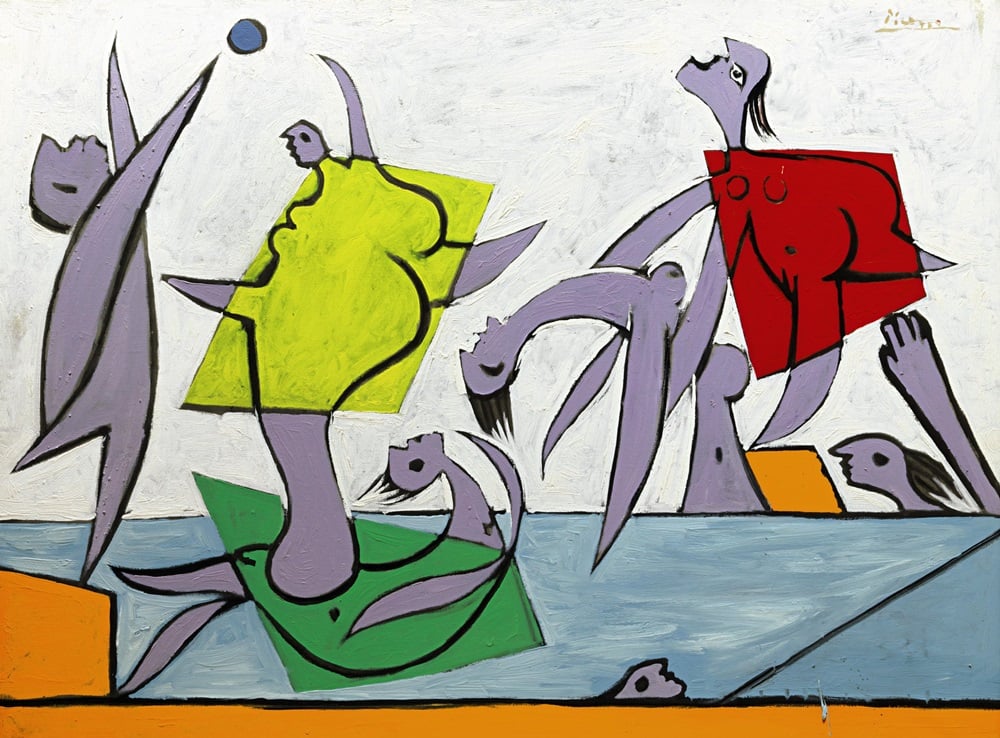
Top lots include a $35 million Picasso and an $18 million Giacometti.

Eileen Kinsella

The art world is bracing for another marathon spring season of New York auctions and fairs in the first half of May. The fireworks start with the major evening sales of Impressionist and modern art at Christie’s and Sotheby’s early next week. A glimpse of their offerings points to a season brimming with blockbusters. Christie’s evening sale on Tuesday May 6 has 54 lots and is expected to realize in excess of $245 million, while Sotheby’s sale on May 7 has 72 lots on offer and is expected to bring in between $220.6 million and $345 million.
Both are predictably heavy with blue-chip names like Picasso, Matisse, Miró and Giacometti. Is $10 million the new $1 million? We’ll find out. Both houses have numerous lots where the low end of the asking price is $10 million. At Christie’s the top eight works have a low estimate at or above $10 million while Sotheby’s evening Impressionist sale has five works where the low end of the estimate is $10 million. artnet News previews the week’s top offerings.
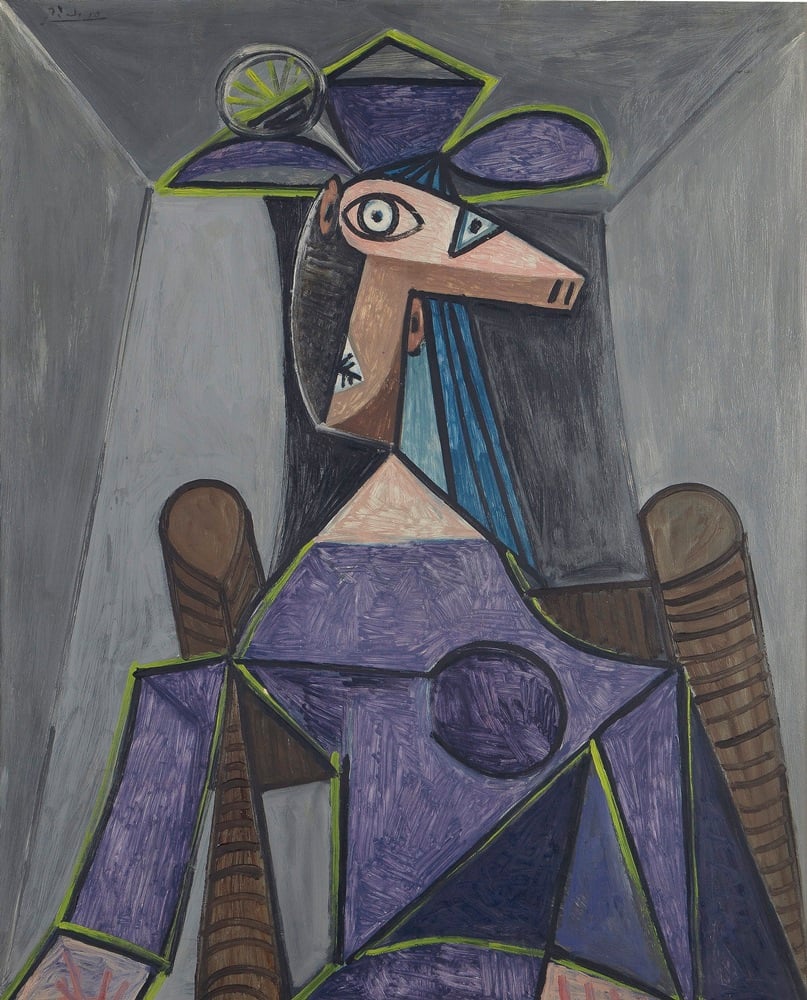
Picasso, Portrait de femme (Dora Maar) (1942) Estimate: $25–35 million. Photo: Courtesy Christie’s.
The subject of this 1942 portrait is Dora Maar, Picasso’s lover and muse. She has been described as the most significant inspiration for his art during the years 1936 to 1944. “Don’t attempt to ignore the Pinocchian aspect of her nose, and certainly not its phallic connotations,” Christie’s catalogue advises. In these and other works created during the period, the artist transformed Maar’s features into “the sum of destructions” as he once described his process. Nonetheless, he also cast her as a universal “mater dolorosa” or “mother of sorrows” amid the turbulence of the war years. Estimate: $25–$35 million.
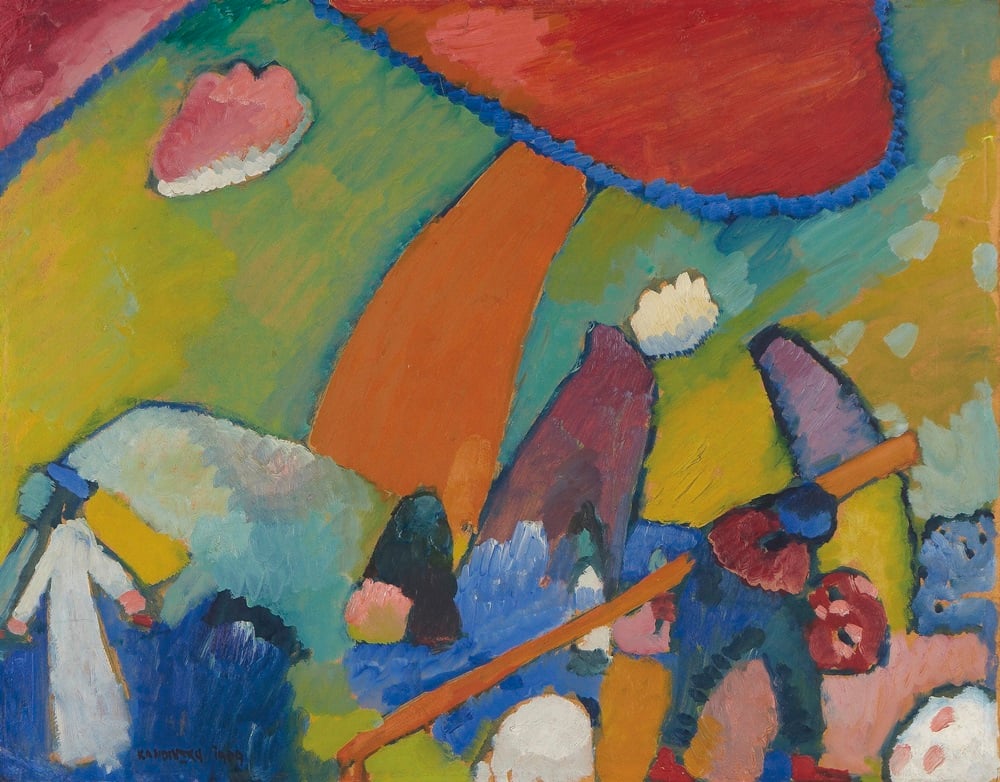
Wassily Kandinsky, Strandszene (1909)
Estimate: $16–$20 million. Photo: Courtesy Christie’s.
Kandinsky created this work in late 1909, by which time “the initial shock wave of Fauvism had passed through the art world,” according to Christie’s catalogue. The small Bavarian market town of Murnau, at the foot of the Alps, became, for Kandinsky, the equivalent of what Collioure had been for Matisse or Horta del Ebro was for Picasso. In the year before he created the work, on a visit to Murnau, Kandinsky wrote to his companion, painter Gabriele Munter, “It is very, very beautiful…the low-lying and slow-moving clouds, the dusky dark-violet woods…I even dreamt of these things.” As Christie’s points out, “the great developments in early modern art often took place, not in the great cosmopolitan centers of Europe, but in small, out-of-the-way locales where painters could experience a quieter, more introspective and elemental way of life.” Estimate $16 to $20 million.
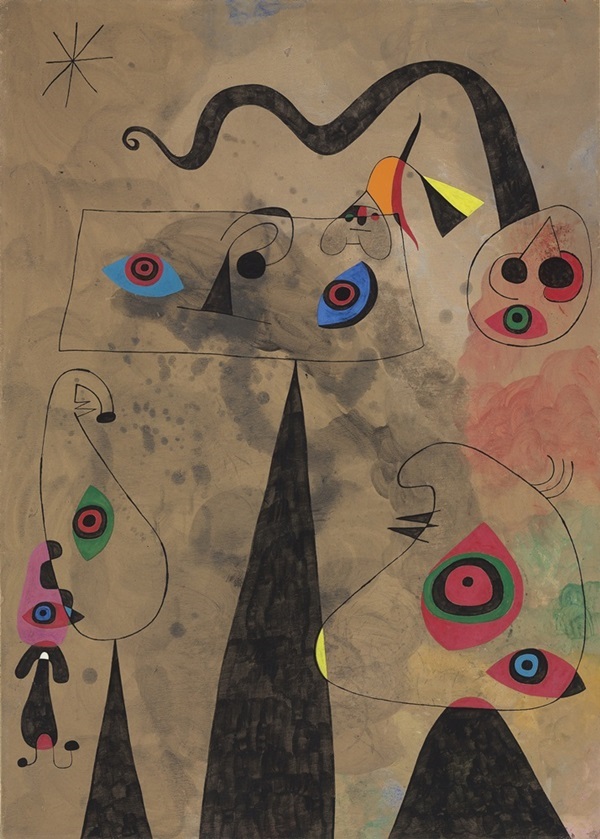
Joan Miró, Le serpent à coquelicots traînant sur un champ de violettes
peuplé par des lézards en deuil (1947)
Estimate: $12–$18 million. Photo: Courtesy Christie’s.
This work is one of a group of painting Miró completed between late 1947 and spring of the following year, after he returned from his first trip to and an extended stay in America. Miro’s experience of the US was “profoundly personal. . . . We find here the production of an artist newly invigorated,” following the war years, when he worked in self-imposed obscurity in order to avoid attention from the Franco regime. Around this time the artist began to see gratifying signs of his growing international reputation. Last offered at auction in May 2000 at Christie’s New York, the work sold for $2 million on an estimate of $800,000 to $1.2 million. This time around, the work is estimated at $12–$18 million.
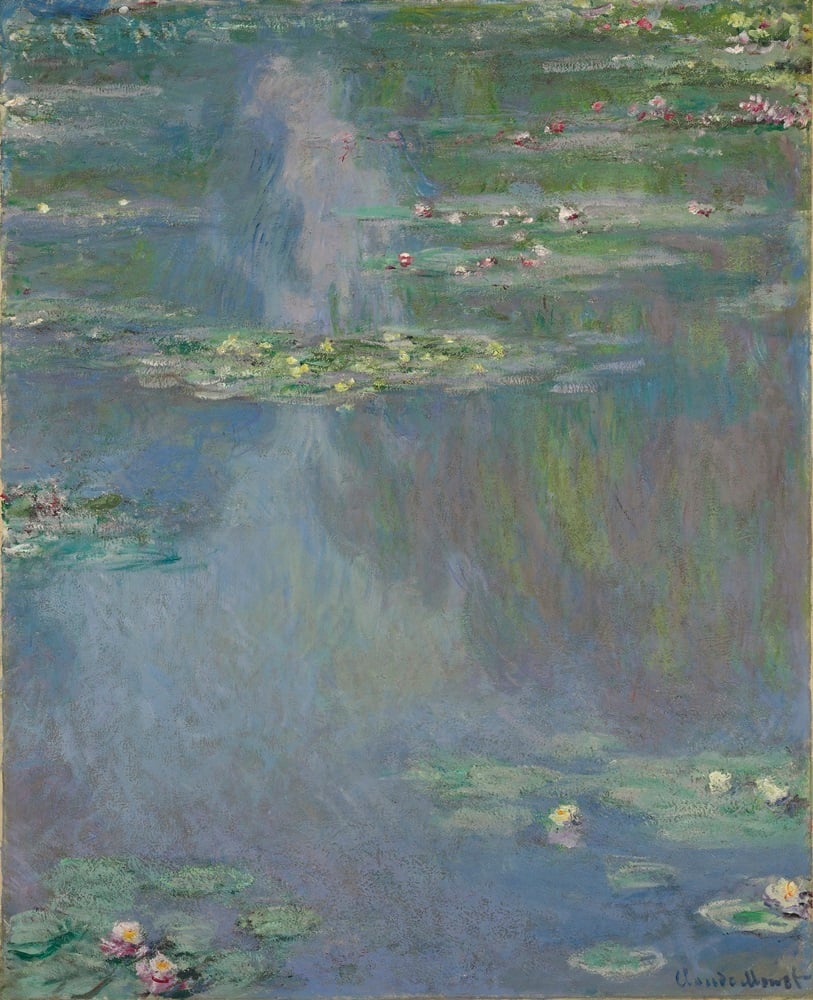
Monet Nymphéas (1907)
Estimate $25–$35 million. Photo: Courtesy Christie’s.
This 1907 Monet Nymphéas comes from the estate of Huguette Clark, the ultra-reclusive heir to her father W.A. Clark’s copper fortune. Born in 1906, she died in 2011, leaving no heirs. Clark’s life became the focus of tabloid headlines before her death, when local news reports described how she opted to live out her final years in a Manhattan hospital rather than at one of her residences in New York City or Santa Barbara. Her father, dubbed the “Copper King” in the mid-1800s was at one time one of the wealthiest men in the US, standing alongside titans like John D. Rockefeller. By 1870, he had amassed one of the country’s best collections of fine and decorative arts, and he rarely sold or exchanged anything. Estimate: $25–$35 milllion.

Modigliani, Jeune homme roux assis (1919).
Estimate: $8–$12 million. Photo: Courtesy Christie’s.
Despite that the identity of Modigliani’s sitter does not seem to be firmly established, the painting draws praise for being authoritative in its “hieratic elegance and strict economy of palette,” according to Christie’s. It was painted in 1919, just a few months before Modigliani fell victim to the ravages of tuberculoisis and alcoholism. The work displays the consummate realization of the signature portrait style he had developed in the previous three years. Estimate: $8–$12 million.
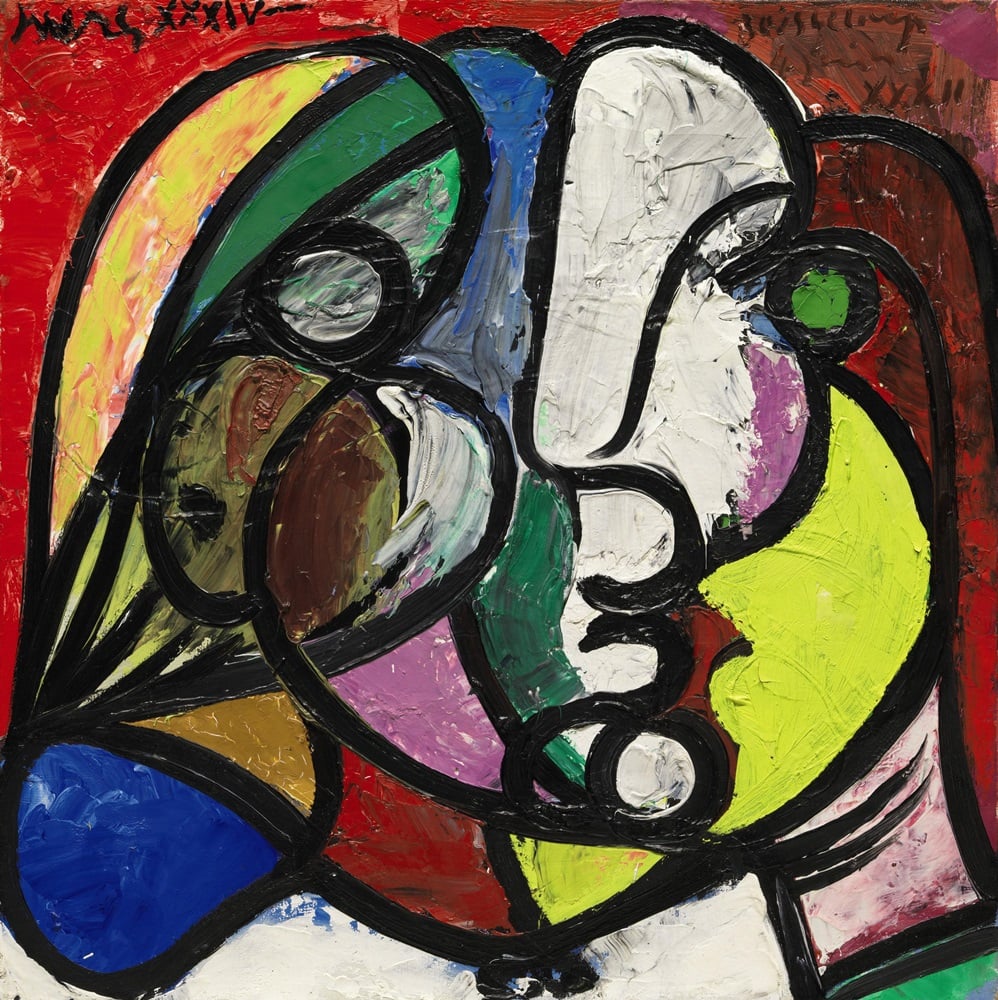
Picasso, Tête de Marie-Thérèse (Painted June 4, 1932–March 1934)
Estimate $15–$20 million. Photo: Courtesy Sotheby’s.
Sotheby’s is offering this portrait of Marie- Thérèse, Picasso’s lover and muse who he spotted on the streets of Paris in 1927. She became a powerful presence in his life and art, as reflected in a landmark series of portraits he begain in 1932. Sotheby’s describes this particular work, begun in 1932 and completed in 1934 as “radiant” and the broader group of Marie- Thérèse pictures as among the artist’s “most euphoric, sexually charged and inspired compositions.” This painting also has a sterling provenance; it remained in Picasso’s possession until his death in 1973. He bequeathed it to his wife Jacqueline, who eventually gifted it to former MoMA director William Rubin in 1984. It was sold once privately but has never appeared at auction before. Estimate: $15–20 million.

Henri Matisse, La Femme en jaune (1923)
Estimate: $9–$15 million. Photo: Courtesy Sotheby’s.
La Femme en jaune (1923) is considered one of the finest portraits from Matisse’s early Nice period, when his skills as a colorist were at their height. His studio in Nice “had a magnificent view of the sea . . . and the light that streamed through the window provided excellent illumination of the tapestries and textiles that hung in his studo,” according to Sotheby’s. This was the site of the some of the most lavish interior scenes he painted in the 1920s. Estimate: $9–$15 million.
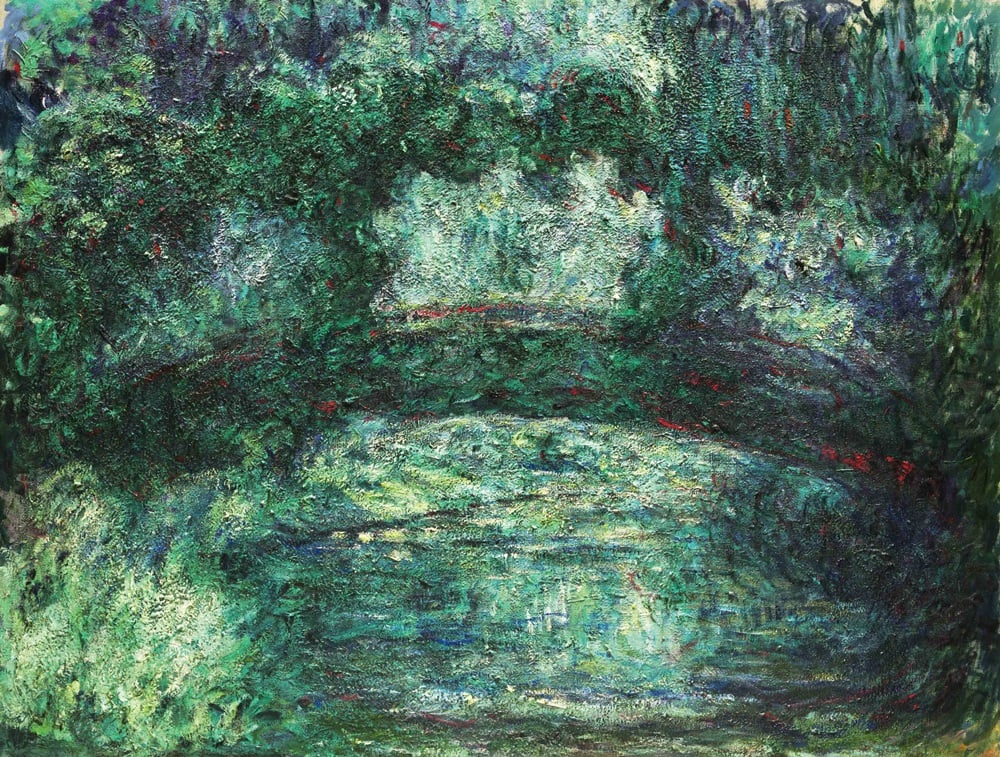
Monet, Le pont japonais (Painted 1918–24)
Estimate $12–$18 million. Photo: Courtesy Sotheby’s.
Among the images Monet is most famous for are his lush depictions of the Japanese bridge spanning the lily pond of his garden at Giverny. Between 1918 and 1924 Monet lavished attention on the bridge in his garden. His paintings merge land with sky and sky with water. As Sotheby’s specialists put it, the artist aimed to suggest a hybrid environment “where East becomes West through the powers of French culture and where nature becomes art through Impressionist vision.” Estimate $12–$18 million.

Picasso, Le Sauvetage (1932).
Estimate $14–$18 million. Photo: Courtesy Sotheby’s.
The painting, another 1932 work inspired by Picasso’s muse Marie-Thérèse, depicts her dramatic seaside rescue, juxtaposing two figures involved in a lively game of beach ball with the swimmer’s limp body being hoisted from the water. The artist took liberties with his story: in actuality Marie Therese had become seriously ill after swimming in the Marne river. As Picasso’s biographer John Richardson wrote: “He transposes the accident from the icy, rat-infested river to a sunny beach, where he envisions Marie-Thérèse being saved from drowning . . . The pathos of these images is tinged with eroticism.” The painting was last sold at Sotheby’s a decade ago in May 2004 when it brought $14.8 million on a $10–$15 million estimate. This time the asking price starts at $14 million.

Giacometti La Place (Conceived and cast in 1948)
Estimate $12–$18 million. Photo: Courtesy Sotheby’s.
La Place (1948), the sculptor’s first multifigural sculpture, was conceived in the context of an urban environment. The positioning of the figures reflects the way “in which isolated city dwellers pass without stopping or interacting,” according to Sotheby’s. A major concern of the Existentialist movement was reconciling the quiet life of the mind with the din of urban existence, a subject Giacometti tackles here. According to auction records, the work was last sold in May 2000 for $4.5 million, when it missed the low end of the $5–$7 million estimate. This time the asking price is $12–$18 million.